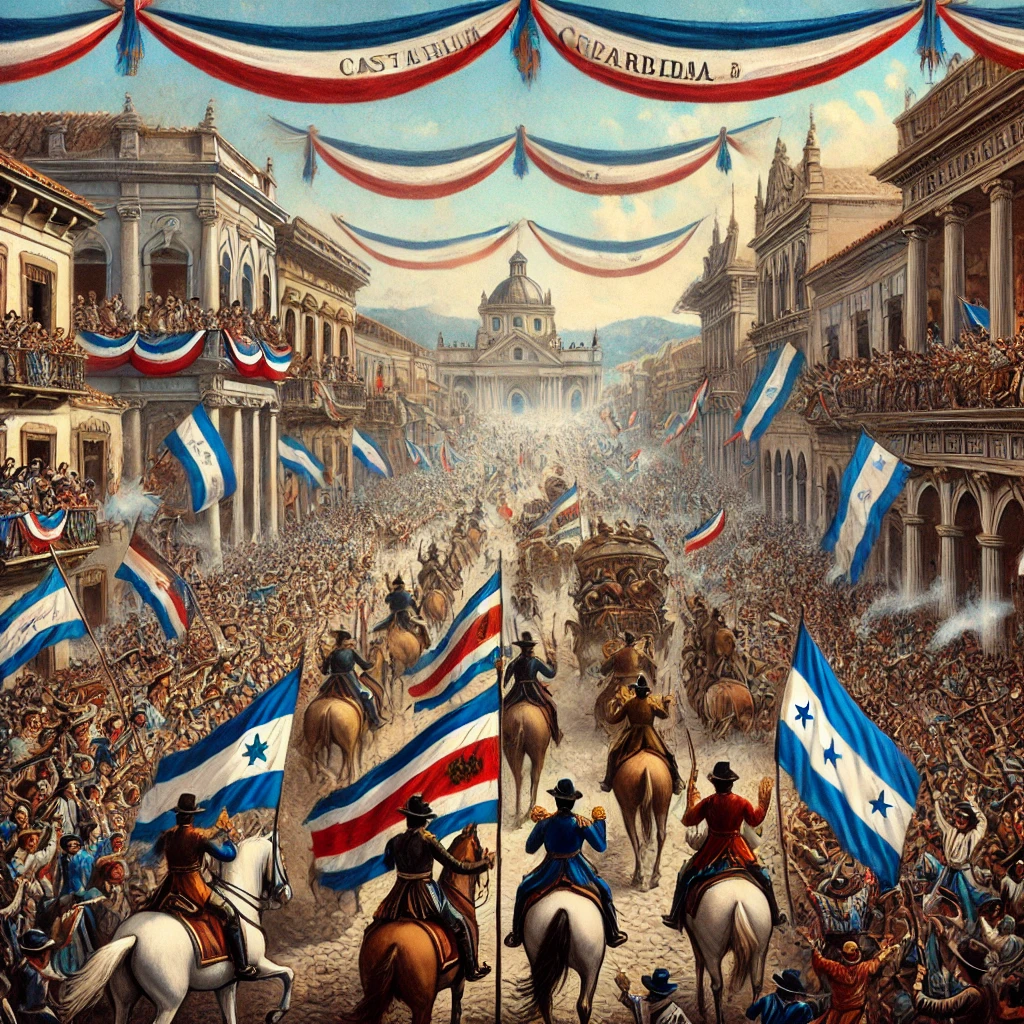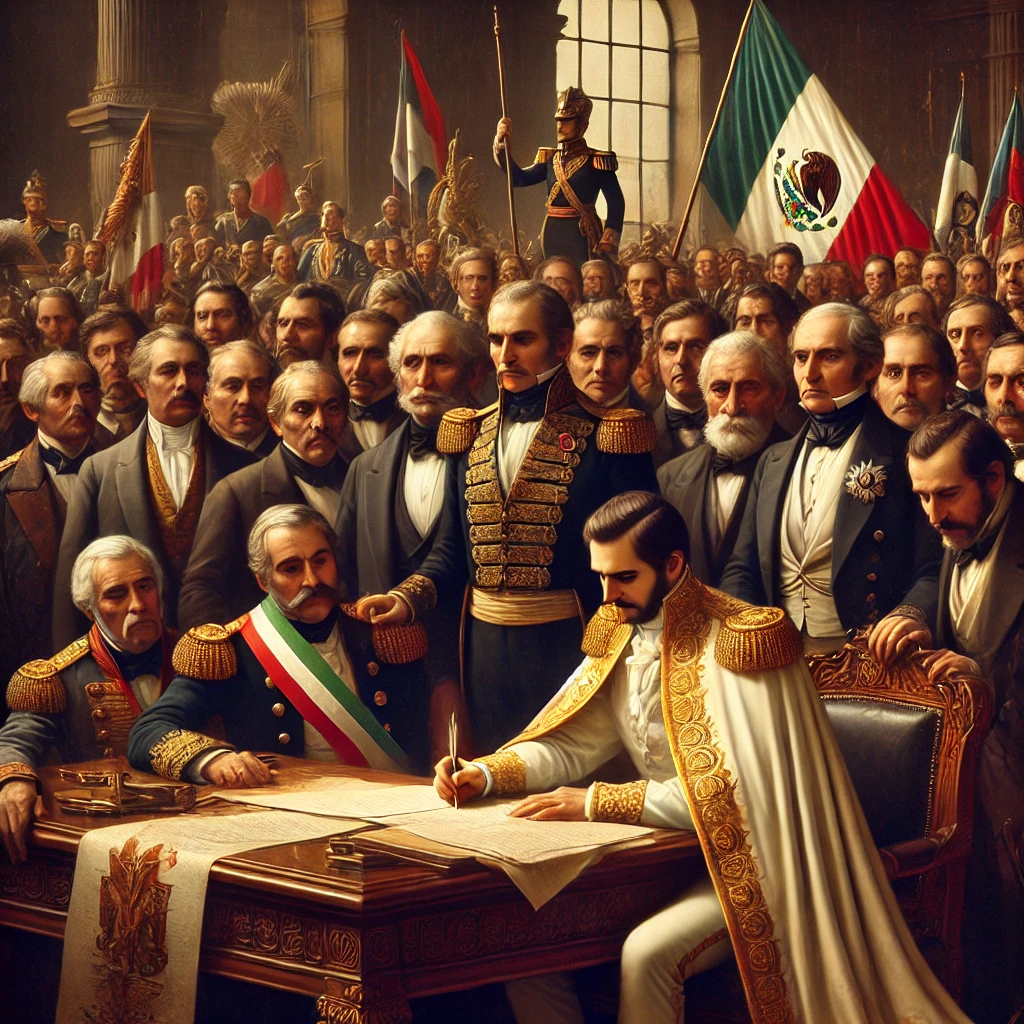On September 15, 1821, the strategic vision of Mexican caudillo Agustín de Iturbide led to a historic moment in Central American history. On this day, Iturbide’s plan for independence not only secured Mexico’s freedom from Spanish rule but also paved the way for five Central American countries—Costa Rica, El Salvador, Guatemala, Honduras, and Nicaragua—to break free from Spanish control. This event marked a significant turning point in the history of the region, as the plan laid the foundation for the emergence of new nations in Central America.
The Background of Agustín de Iturbide
Agustín de Iturbide was a prominent Mexican military leader and politician who played a crucial role in Mexico’s struggle for independence. Born in 1783, Iturbide initially served as a royalist officer fighting against the independence movement led by figures like Miguel Hidalgo and José María Morelos. However, he eventually switched sides and became a key figure in the movement for Mexican independence. Iturbide’s experience and leadership abilities were instrumental in crafting a plan that would extend beyond Mexico to influence the broader Central American region.

The Plan of Iguala
In February 1821, Iturbide promulgated the Plan of Iguala, a comprehensive strategy designed to achieve Mexican independence from Spain. The plan was built on three main pillars: the establishment of a constitutional monarchy, the preservation of Roman Catholicism as the state religion, and the guarantee of equality between different classes. The Plan of Iguala was remarkably inclusive, offering protection and concessions to various factions within Mexico, including the Spanish loyalists and the independence movement leaders.
The Plan of Iguala was pivotal in uniting diverse political and social groups within Mexico, ultimately leading to the successful declaration of independence on September 27, 1821. However, the implications of Iturbide’s plan extended beyond Mexico’s borders. His vision and diplomatic efforts significantly influenced the course of events in Central America, where similar movements for independence were gaining momentum.

Central America’s Path to Independence
In the early 19th century, Central American nations were also seeking to liberate themselves from Spanish rule. The region, which included present-day Costa Rica, El Salvador, Guatemala, Honduras, and Nicaragua, had been part of the Spanish Empire for centuries. The local populations were increasingly restless and inspired by the broader movements for independence sweeping across Latin America.
The leaders of these Central American regions were initially hesitant to act unilaterally for fear of retribution from Spain. However, the success of Iturbide’s Plan of Iguala and his subsequent efforts to negotiate with Central American notables played a crucial role in accelerating their pursuit of independence. By recognizing the strategic and symbolic importance of Iturbide’s plan, Central American leaders saw an opportunity to achieve their own goals of sovereignty and self-determination.

Acceptance and Implementation
The acceptance of Iturbide’s plan by Central American notables was facilitated through diplomatic channels and negotiations. Iturbide, leveraging his political influence and the support of various factions, was able to persuade the local leaders of the benefits of adopting a similar plan for their own independence. The Central American leaders, including prominent figures such as José María Valle, Pedro Molina, and Francisco Morazán, were instrumental in rallying support for independence within their respective regions.
On September 15, 1821, Central American leaders convened in Guatemala City to formally declare their independence from Spain. This date marked a significant milestone in the history of Central America, as the region’s newfound freedom was officially recognized. The collective decision of Costa Rica, El Salvador, Guatemala, Honduras, and Nicaragua to break away from Spanish rule was a testament to the influence of Iturbide’s plan and the broader movements for independence.
The Impact of Independence
The independence of the Central American nations had profound implications for the region. The dissolution of Spanish control allowed for the establishment of sovereign states with their own governments and political systems. However, the transition was not without challenges. The newly independent nations faced internal conflicts, economic difficulties, and political instability as they sought to define their identities and establish their governance structures.
In the wake of independence, the region experienced a series of political and social upheavals, including struggles for power, territorial disputes, and conflicts over the form of government. Despite these challenges, the independence movement set the stage for the development of distinct national identities and the pursuit of self-determination in Central America.
The Legacy of Agustín de Iturbide
Agustín de Iturbide’s role in the Central American independence movement is a testament to his vision and diplomatic acumen. His Plan of Iguala not only achieved its primary goal of Mexican independence but also provided a framework for other regions to follow. The impact of Iturbide’s plan extended far beyond Mexico, influencing the course of history in Central America and contributing to the region’s emergence as a collection of independent nations.
The legacy of Iturbide’s efforts is reflected in the enduring significance of September 15 as Independence Day in Central America. The date is celebrated annually in Costa Rica, El Salvador, Guatemala, Honduras, and Nicaragua, marking the achievement of sovereignty and the beginning of a new chapter in their histories.
Lasting Impact
The adoption of Iturbide’s plan and the subsequent independence of Central American nations underscore the interconnectedness of the independence movements across Latin America. It highlights the role of leadership, diplomacy, and strategic vision in shaping the course of history. The events of September 15, 1821, stand as a powerful reminder of the quest for freedom and the enduring impact of historical decisions on the present and future of nations.
The story of Central American independence continues to inspire and inform discussions about sovereignty, national identity, and the legacy of historical figures like Agustín de Iturbide. The achievements of 1821 remain a pivotal moment in the region’s history, celebrating the triumph of self-determination and the formation of independent nations in Central America.
